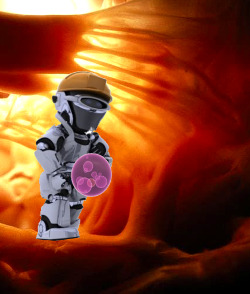Cell-moving robots bring organ-building closer
 Biomedical engineers in the United States have announced an advance in the field of tissue manufacture – bringing the likelihood of 3D-printed replacement organs even closer.
Biomedical engineers in the United States have announced an advance in the field of tissue manufacture – bringing the likelihood of 3D-printed replacement organs even closer.
A major goal of medical research is to develop a way to clone and grow a copy of a person’s organ, ending the risk of not finding donors and of the patient rejecting the donated body part.
Tissue engineering also provides a more practical means for researchers to study cell behaviour, such as cancer cell resistance to therapy, and test new drugs or combinations of drugs to treat many diseases.
The new approach uses a micro-robot, which is remotely controlled by magnetic fields, to move one individual cell-encapsulating ‘hydrogel’ at a time, to build complete cell structures.
Human tissue architecture is very complex, with different types of cells at various levels and locations. To re-create these structures, the location of the cells is vitally important as it impacts how the structure will ultimately function.
“Compared with earlier techniques, this technology enables true control over bottom-up tissue engineering,” explains researcher Savas Tasoglu, PhD, MS, a fellow in the Brigham and Women’s Hospital Division of Renal Medicine.
The team has demonstrated that micro-robotic construction of cell-encapsulating hydrogels can be performed without affecting cell vitality and proliferation.
They say the next step will be to get several micro-robots working together.
“Our work will revolutionise three-dimensional precise assembly of complex and heterogeneous tissue engineering building blocks and serve to improve complexity and understanding of tissue engineering systems,” said Metin Sitti, professor of Mechanical Engineering and the Robotics Institute and head of CMU's NanoRobotics Lab.
“We are really just beginning to explore the many possibilities in using this micro-robotic technique to manipulate individual cells or cell-encapsulating building blocks,” says Demirci.
“This is a very exciting and rapidly evolving field that holds a lot of promise in medicine.”







 Print
Print